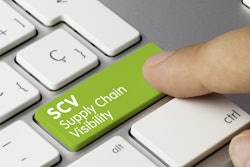
As the global economy tries to move beyond the pandemic, supply chain issues are popping up everywhere. All someone has to do is take a look at what’s happening off the coast of California, where nearly 100 container ships are backed up as they wait to unload their cargo.
With supply chains breaking down, organizations are increasingly forced to look to alternative suppliers to keep their operations humming along.
Unfortunately, switching suppliers is often hard and risky. In fact, when organizations don’t have the right tools and processes in place, switching suppliers can actually put them in a worse position than they were before.
For that reason, it is critical for organizations to do everything they can to accelerate the supplier onboarding process and ensure relationships with new suppliers start off on the right foot out of the gate. Here’s how to make sure that happens.
1. Adopt tools that expedite the onboarding process.
Suffice it to say that the days of managing suppliers and invoices by hand have gone the way of the dodo bird. In today’s complex world, organizations are deploying solutions that expedite workflows, organize information and streamline onboarding processes.
For the best results, companies need to be able to quickly vet and approve new suppliers and set up the ability to transact and do business with them right away.
The more flexibility and speed you can bring to the process, the more likely your new supplier is to get a favorable first impression of you, setting the foundation for a strong, mutually beneficial relationship for years to come.
2. Use data to increase control over your supply chain and the invoice cycle.
Many organizations today don’t struggle to collect data. But when it comes to making sense of their data, they run into problems.
Using tools that aggregate all relevant supplier and payment data in one place, organizations can increase control over their supply chains and proactively identify opportunities and mitigate risks.
For example, when you have clear visibility into the invoice cycle, take advantage of all early payment discounts available. And, when money’s tight, stretch out payments until their due dates to keep cash flow running smoothly.
Click here to hear more about data and AI in the supply chain:
3. Give suppliers visibility into payments.
Historically, when suppliers had questions about payments, they would either pick up the phone and call the company or shoot a quick email and wait for a response.
In either scenario, the supplier gets frustrated because they’re spending time trying to collect the money they’re owed and can’t find the answers they need. On the flip side, accounts payable (AP) teams get frustrated too because another task falls on their plate -- tracking down the invoice and payment information.
By applying the right tools, organizations can offer 24/7 self-service portals to their vendors. As a result, all relevant payment information, including invoice amounts, statuses and expected pay dates, can be easily accessed by suppliers at their own convenience. Instead of waiting for the AP team to get back to them with relevant information, suppliers can track down the data they need at the moment they need it.
Not only does this make the process smoother from the supplier’s perspective, but it also enables the AP team to reclaim time and invest it in other important areas of operations.
4. Pay suppliers predictably.
Having visibility into payments is one thing. Knowing when payments are likely to come in is quite another.
In today’s difficult business climate, it’s more important than ever for suppliers to know when they can expect money to come in. By optimizing AP processes, organizations can bring predictability to payment cycles. As a result, suppliers will know, with certainty, that payment is going to come like clockwork on the 15th of the month, for example.
This predictability gives suppliers the peace of mind that comes with knowing the cash flow river keeps running smoothly, enabling them to spend more time focusing on other important areas of operations.
Overcome supply chain shortages with rapid new supplier onboarding.
One day, the supply chain issues that are impacting industries across the globe will be in the rearview mirror. But, until then, organizations will need to work diligently to overcome supply chain shortages. And, the easiest way to do that is by taking a proactive, agile stance to new supplier onboarding.
By making smart investments in technology, organizations can gain complete control over the invoice cycle. Not only does this enable them to maximize payment efficiency, but it also allows suppliers to benefit from predictable payments, which is certainly a treat in today’s hectic business climate.
In this light, a few shrewd moves can go a long way toward helping your organization build a resilient business that’s positioned to thrive for years to come.




![Pros To Know 2026 [color]](https://img.sdcexec.com/mindful/acbm/workspaces/default/uploads/2025/08/prostoknow-2026-color.mduFvhpgMk.png?auto=format%2Ccompress&bg=fff&fill-color=fff&fit=fill&h=100&q=70&w=100)







![Pros To Know 2026 [color]](https://img.sdcexec.com/mindful/acbm/workspaces/default/uploads/2025/08/prostoknow-2026-color.mduFvhpgMk.png?ar=16%3A9&auto=format%2Ccompress&bg=fff&fill-color=fff&fit=fill&h=135&q=70&w=240)





